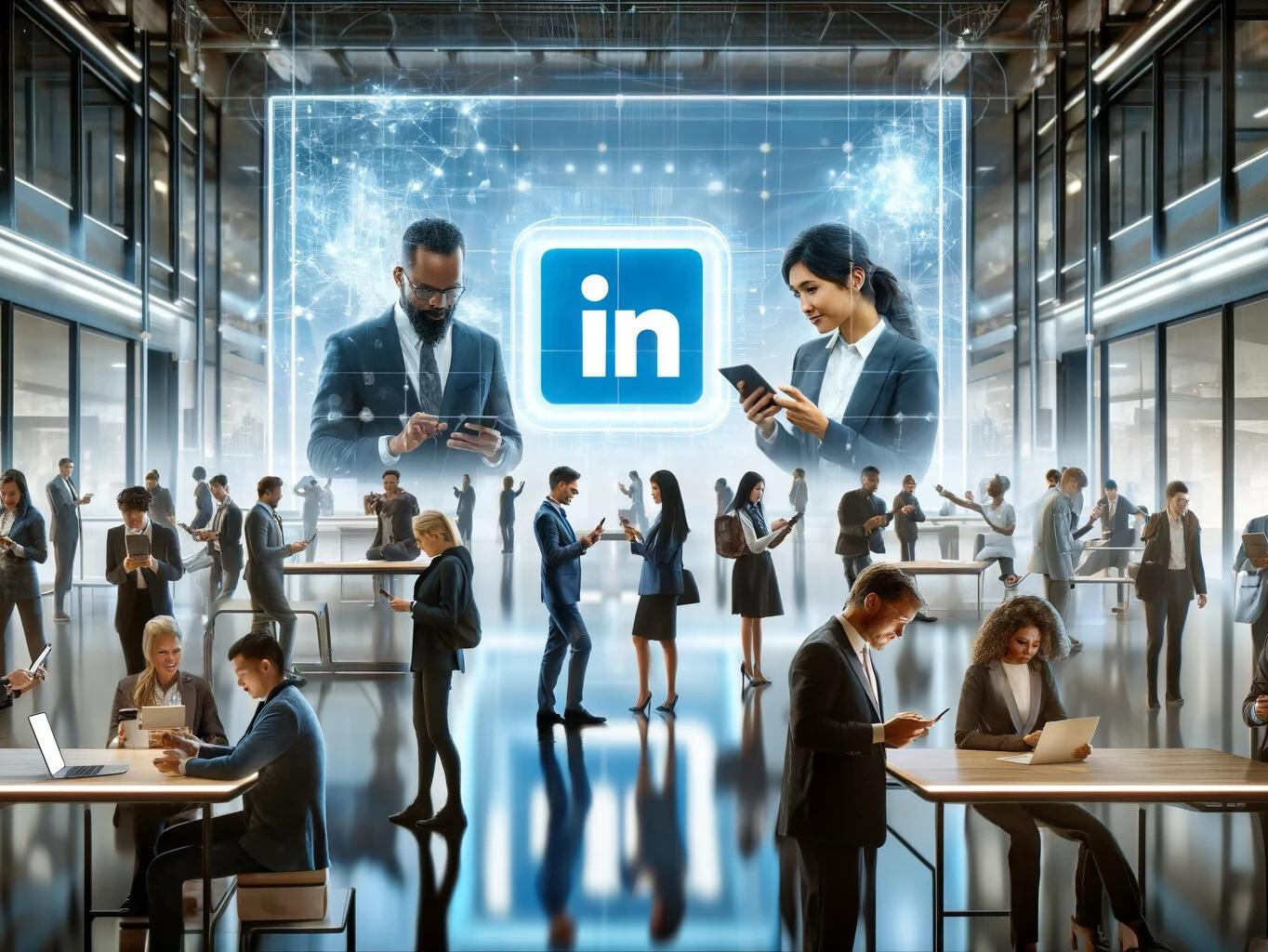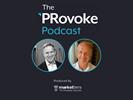Ajay Shamdasani 26 Apr 2024 // 7:24AM GMT

Globally, public relations agencies have reported booming demand for executive thought leadership content in recent years. Yet, the space seems to be largely dominated by LinkedIn. The net result: a proliferation of personal branding content on LinkedIn, which has in turn raised questions about the effectiveness of thought leadership as the platform has become increasingly inundated – if not saturated – with content of questionable value.
A confluence of factors have contributed to LinkedIn’s success in the thought leadership space — amongst them are its common and differentiated purpose, coupled with little competition, its niche market, pool of a billion users, and its first-mover advantage, much like what Amazon.com enjoys in the online retail space. All of which serve to make it the global town public square for professionals.
Accordingly, LinkedIn is also viewed as a legitimate news site in some circles. The fact that thought leaders flock from platforms like X to LinkedIn to have more substantive conversations and discussions has made the site more relevant to specific industries and sectors.
“LinkedIn has essentially pivoted from a professional networking platform to a news and content platform, and is catering well to the needs of users in today’s modern media ecosystem,” said Careen Winters, chief strategy officer and executive vice president of MikeWorldWide’s corporate reputation practice in New York.
“LinkedIn has become a forum for thoughtful conversation and an antidote to the politicization of news media. This makes leaders comfortable bringing their [point of view] forward,” she said, going as far as to say that if an announcement was important enough for a brand to post, the company’s CEO should be too. She remarked that LinkedIn was the perfect platform for doing so.
The impact of the pandemic and LinkedIn’s scale should not be underestimated in its thought leadership success. It was an essential communication tool during Covid-19 for companies to promote their thought leadership when face-to-face conferences and networking events were put on hold.
“It effectively became an online CV…for corporates to talk up their business results, products, and thought leadership,” said Mary Devereux, an experienced communications professional in Hong Kong. “It has remained in this strong position because, to be frank, there is little competition in this specialized space,” she said.
On the other side of the world, Winters has also seen an explosion of thought leadership content post-Covid, “much of which is neither thoughtful nor leading,” she said, noting the tendency to “flood the zone” with content can be hard to resist for brands.
Yet, with thought leadership often viewed as akin to press releases in the modern era, Winters warns users about over-sharing. “While it is ok to use LinkedIn to amplify your news, it is not meant to feature every disclosure,” she notes.
Still, LinkedIn has several mechanisms that aim to separate true thought leadership from the rest, including its trending timeline and its Top Voices designation. Simply put: the quality of content matters in an age where time is scarce and people have short attention spans.
What does the data say?
LinkedIn is the world's largest professional networking platform, attracting 135 million active users daily.
With more than 65 million LinkedIn users described as business decision-makers, LinkedIn has positioned itself as the most important social platform for B2B marketers. Recent surveys show that 40% of B2B marketers believe LinkedIn is the most effective channel for high-quality lead generation. Marketers report a two times higher conversion rate on the platform, and brands have seen a 33% increase in purchase intent from LinkedIn ads.
The platform also wins praise for the data it provides users in terms of how their content performs over time. In June 2023, the platform introduced significant algorithm updates to promote content that shares knowledge or advice and strengthens connections.
Watching the analytics and using the data to guide future content deployment tells brands where to pivot and where to double down, Winters said.
“LinkedIn is a place where authenticity counts and it is a place where the users are looking for the voices and opinions of C-suite leadership…By definition, this is a more limited universe and a bit of a ‘filter’ for content,” Winters said.
She cited the example of a Gen Z candidate considering a job. “They typically will look at CEO profiles on social media....so having your content coming from your CEO versus your company page makes a difference.”
LinkedIn, like any other social media platform, is constantly in flux – and while it may appear to be saturated, with enough creativity, opportunities remain to craft compelling, authentic, and quality content that cuts through the noise.
“We often underestimate that our audiences have also developed their own mental filters when consuming content, and that means good content still stands out, even in a crowded space,” says Cognito Singapore MD Emma Arora.
Success stories
The site has helped plenty of organizations forge stronger connections and LinkedIn is a particularly good platform for new or smaller companies. For example, Devereux recalls that last year, insurtech firm Lapetus Solutions offered facial health analytics through selfie photos. In doing so, it transformed the underwriting experience and via a microtargeted advertising campaign, achieved two to three times above average CTR while building a strong database of leads.
“Lapetus was able to reach far beyond the attendees at the conference or what could have been achieved through media relations only,” Devereux said. LinkedIn was part of their strategy.
Another compelling LinkedIn success story in Singapore, recounted by James Baldwin, Ogilvy PR’s Asia-Pacific head of influence, involved one of Ogilvy’s large enterprise technology clients. The multinational tech corporation picked four executives in four different market segments to develop thought leadership. The aim was to increase exposure and credibility in space of blockchain, artificial intelligence, and cloud computing, across multiple APAC markets.
Effective social listening, combined with audience mapping helped these four executives to become thoughts leaders in their own right, seeing the campaign build 300 new relationships and engagement rise by 300% compared to branded content alone. Baldwin said. “Positioning each employee as the expert, rather than the company itself, allows us to establish a much more individual and credible tone of voice which resonates a lot more in today's saturated landscape of corporate jargon.”
“Nowadays, people don’t engage as much with brands, as ultimately they know there’s a sales objective at some point. They do however engage with other individuals, prioritising authentic experience, ethical values and personal trust to impact their decision making,” he said.
Baldwin said that LinkedIn gets its strength from its credibility, because ultimately, it’s all about professional careers. “Your opinions need to be considered, and rooted in genuine expertise. If not, your professional reputation and the reputation of the business you are speaking for is at risk. Thought leaders can’t afford to be disingenuous.” He also added that KOL opinions play an increasingly prominent and integral role in the B2B customers' due diligence process.
But being credible means that companies must remember the fundamentals of public relations, particularly in terms of content that benefits the community.
“Even Golin regularly shares content pieces that benefit the industry rather than themselves,” said Jonny Bentwood, Golin’s global president of data and analytics in London. “Our open door approach evidences that showing thought leadership is an exceptional channel to understand issues and solutions relevant to them. Even if it does benefit competitors, a rising tide raises all ships. Oversharing is not a problem if done properly.”
Yet, when done badly, there is a price to pay. Bentwood noted that when it came to over-promotion, it was “hard to get the balance right.”
Balancing perceptions, therefore, may include showing a company’s leaders winning awards or even just being a part of the community.
“Remember, LinkedIn is a community-based program, but one which aids conversations and you can join in. If over-promotion is one problem, misalignment can be a second problem,” Bentwood said, adding inconsistent messaging could harm one’s credibility.
“I have seen some companies talk about an award they won, but then the content was hijacked by people trying to talk about other issues,” he points out.
Content and conversions
Over at Ogilvy PR, Baldwin indicated that although LinkedIn is by no means the only relevant platform for B2B influence, it is the undisputed leader in the space, and was an integral platform for the majority of Ogilvy client campaigns. Ogilvy PR’s recent research study ‘The Global Rise of Business Influence’ found 90% of industry marketeers believe B2B influencers on social media are an important source of staying up to date with their industry - with 57% citing them as their main source of information.
Winters, too, believes in the site’s effectiveness, given the volume of users turning to LinkedIn as a platform for sharing news and telling stories: “This will only grow. Anecdotally, I’ve heard reporters at major news outlets say that they view LinkedIn as a news source, so at MWW we view it as a top-tier outlet in and of itself.”
Yet, Baldwin warns that notwithstanding its billion users and large audience engagement level, and the fact that much of the business world is on the site, “LinkedIn should not be thought of as mainstream news like, say, the FT. Even if, according to Baldwin, three-quarters of people use social influencers and LinkedIn as their daily news.
The key comes down to the vetting of information. In that regard, LinkedIn isn’t in the same league as most global newsgathering organizations.
Cognito’s Arora said she had received feedback from executives that her firm had supported claiming increases in engagement on their posts, which, she said “led to more [direct message] conversations with existing customers, new prospects and industry partners.”
Yet, she admitted that the link in terms of direct conversions to sales was much harder to quantify. “Our clients have shared that they see the LinkedIn programs as vital for expanding their influence and network, which in turn can help to positively influence their sales pipeline or business outcomes,” she said.
As for the role of employee engagement when using LinkedIn for thought leadership, staffers can serve as powerful brand advocates on LinkedIn by actively sharing content, commenting and interacting with their network.
The Aim Agency in London, for example, supports founders and CEOs in amplifying the reach and authenticity of their business activity.
“Engaged employees help expand the company’s network by connecting with industry peers, sharing valuable insights, and participating in meaningful discussions, resulting in new connections and potential clients or partners for the organisation. When employees actively interact with executives or engage in company activities, they amplify awareness of the discussion, which builds further exposure for themselves and the firm,” said Mia Hadrill, Aim’s founder and CEO.


































.jpg)































